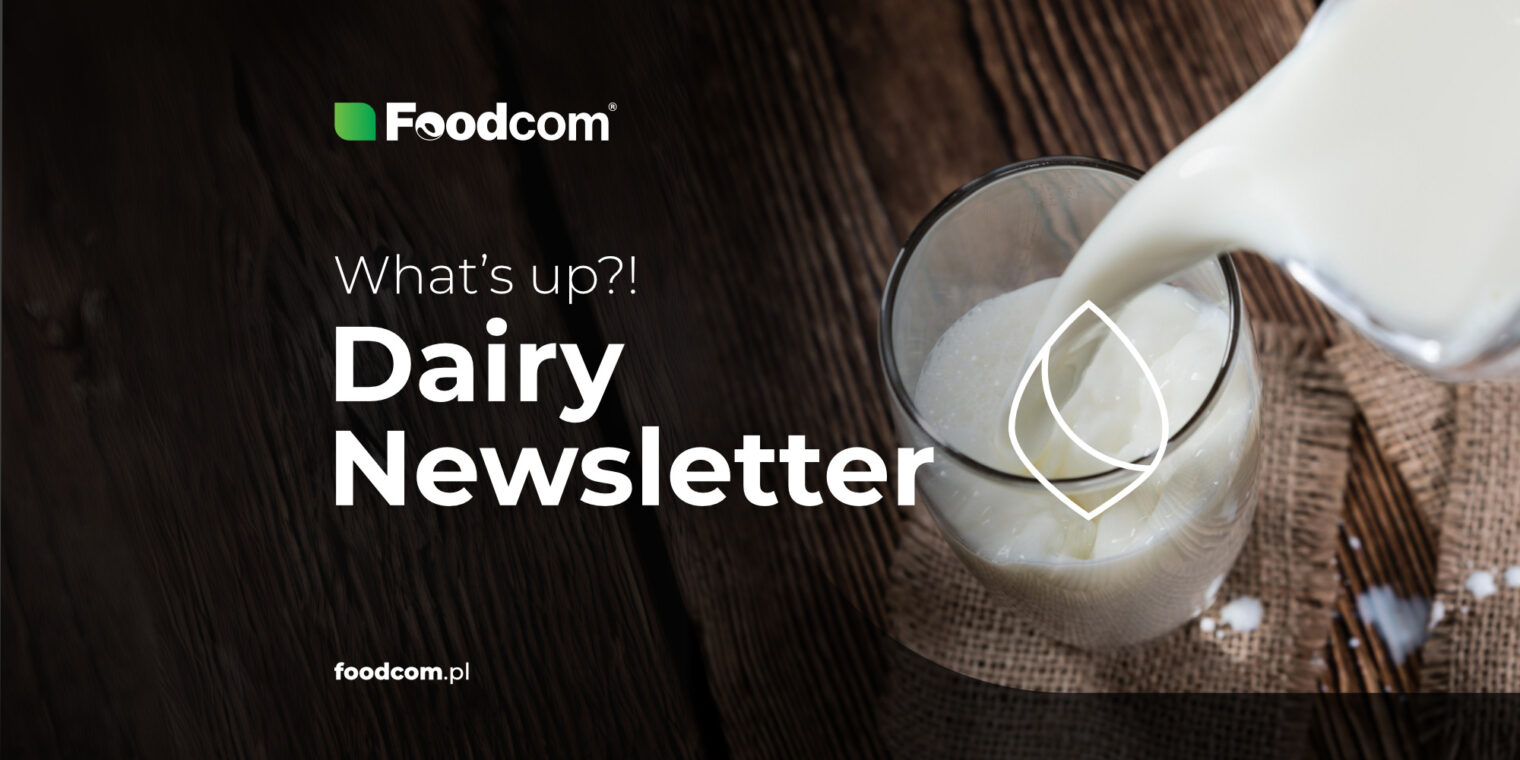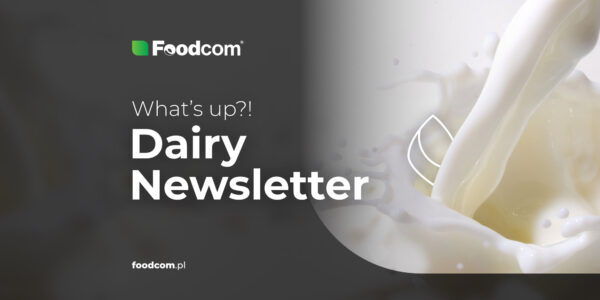Many associate the arrival of spring with the awakening from hibernation and inactivity, accompanied by intense growth and many changes (kind of another edition of ‘new year, new me,’ only it’s later and at a different time of year). As for the dairy market, we will certainly have to wait a little longer for it. For sure, the large volumes of milk expected on the market in April and May will change both prices and the overall situation.
The past week has brought stabilization to the market for many products. However, one cannot say that nothing happened – definitely not. Although some market participants are holding back for the moment, many contracts have been concluded. As always, we will report on the details of the situation for individual commodities in the rest of the newsletter. Everything you need to know is in your favorite legenDAIRY newsletter, so read without further delay!
Skimmed Milk Powder
After a streak of a relatively open market, the last week followed a stabilizing effect. However, this is not a worrying trend, as many countries continue to hold fixed prices for the product offered. We see that future quotations are still quite high and do not yet match the current buyers. It is reasonable to expect a slight weakening of prices for this commodity in the near future.
Butter
On the procurement side, there was some movement when several trading platforms showed that Dutch Butter had been traded at €5. Buyers started to be open to purchasing the minimum amount of the material they needed for the coming month’s production. As for the sale, the volume was satisfactory, considering that the market is not very ambitious at the moment. Polish Butter appears from time to time with a price near 4500 EUR/MT. So far, there are not many buyers for this commodity.
WPC 80 Instant
With the higher possibility of sourcing the product at a lower price, buyers entered the market and actively purchased. However, not in the quantities we expected. People are currently fulfilling production for what to buy is a necessity. The contracts are concluded on a spot basis.
Gouda/Edam
If you read last week’s newsletter, you learned about everything that happened in the cheese market this week. In summary, buyers who needed to fulfill their purchases already have a relatively good amount of stocks and therefore both interest and prices are down on a spot basis.
Cream
The last week can be described as rather quiet as far as Cream is concerned. More dairy liquids on the market have led to a slight correction in the price. At this stage, it is difficult to predict whether this trend will continue for a longer period.
What else?
Europe
Ukraine increases dairy exports
Despite extremely difficult conditions, Ukraine has managed to increase exports of dairy products, mainly cheese, powders and ice cream. In February 2023, Ukraine exported nearly $20 million worth of dairy products, 34.15% more than in January. The main recipients of Ukrainian cheese in February were Kazakhstan (59.87%), Moldova (19.79%), Libya (5.76%), Jordan (5.29%) and Azerbaijan (4.71%). Not cheesy news, you have to agree.
The Portuguese media is sounding the alarm about the extreme price increases of basic foodstuffs
Experts in the dairy industry have no doubt: the main reason is the sharp increase in production costs. In the last two years, energy prices have increased by 60%, feed prices by 58% and fertilizer prices by 200%. It is not particularly surprising that this is directly reflected in the prices on the shelves, but it is not exactly reassuring for consumers…
Austrian cattle farmers are fans of sustainability
More and more of them are opting for haylage farming. Its proponents emphasize that it protects the climate and soil and promotes biodiversity. Perhaps more importantly for many, it also provides tangible financial benefits (which many are using to further invest in sustainability…). Some even argue that this is part of the Austrian character. Admit it, have you also previously associated Austria with hay farming?
The Americas
The massive drought in Argentina will have disastrous consequences for the country’s economy
Argentina is being hit by one of the worst droughts in history, which has virtually halted its main agricultural exports. It was already predicted that agricultural losses would be extremely high, but current forecasts are even more pessimistic. According to experts, Argentina’s gross domestic product will shrink by up to 3% in 2023, primarily as a result of the natural disaster.
Is a revolution in the dairy industry imminent?
It looks like it, even if cow farmers and traditional dairy producers will not be thrilled. Lab-grown meat has been discussed for a long time, but regulations and also the enormous production costs stand in the way of its spread. It’s a different story for lab-produced dairy, which is already securing a place on store shelves. One of the best-known companies in this field is Perfect Day, based in California. Its products are made through a process called ‘precision fermentation,’ which uses yeast and fungi. Enthusiasts argue that this will be a breakthrough for the dairy industry. No matter how it turns out, it’s always better when the revolution flows with milk and not blood…
Lactalis? No longer in Argentina.
Although Lactalis is present in 70 countries around the world, the company has closed all its branches in Argentina. Well, apparently all they need is the remaining dozens of countries in which they operate…
Asia & Oceania
Is genomic research the future of cattle farming?
Dairy farmers in Ondit, Australia, believe this is possible. Conducting genomic testing allows them to make optimal decisions from both a herd and business perspective. The knowledge they gain allows them to make decisions regarding breeding, culling and bull selection. Will other breeders follow in their footsteps? Time will tell.
How long does it take to figure out that cow’s milk is not everything?
As far as the Norco dairy cooperative is concerned, it’s probably a little over 100 years. The cooperative recently expanded its offerings to include alternatives to cow’s milk: Norco P2 Pea Protein and Oat Mylks. Company representatives argue that the new plant-based alternative to milk contains the same amount of protein and calcium and has the same creamy texture as cow’s milk. It contains no gluten, soy, nuts or lactose. Actually, only one question remains: How are these peas and oats milked?
Scientists argue that milking once a day is better for everyone
Granted, these are not American scientists (who are known to have the greatest authority in the world), but researchers from Massey University in New Zealand. According to their research, milking cows once a day instead of twice a day benefits both the cow, the herd and the farmer. This may come as a bit of a surprise, since less frequent milking means less milk. That is true, but less frequent milking also saves money because less feed is used, and less lameness occurs, among other benefits.



![Overview of the rapeseed lecithin market in 2026 [Global Report] Overview of the rapeseed lecithin market in 2026 [Global Report]](https://foodcom.pl/wp-content/uploads/2024/11/rapeseed-lecithin-global-report-600x300.png)



